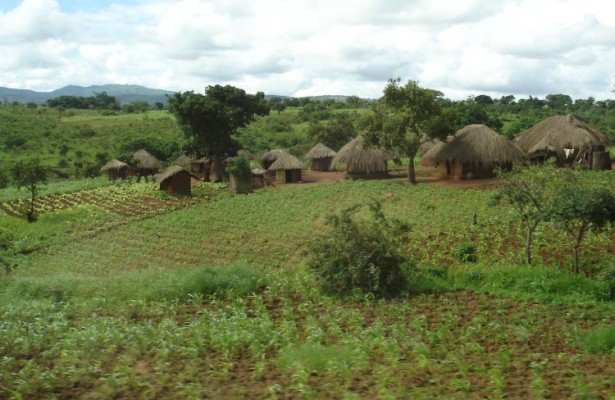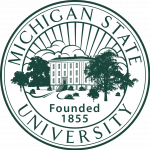Sustainable Intensification
Sustainable Intensification
Description:
Sustainable Intensification generally focuses on improving the efficient use of resources for agriculture, with an emphasis on how to produce more food on the same amount of land. Sustainable intensification uses biological and ecological principles to improve the farming system and reduce the environmental problems. There is a major emphasis on crop management strategies that can reverse land degradation and make yields more stable and less vulnerable to climatic changes.
The term “sustainable intensification” originated in the 1990s in the context of how to achieve improved yields over the long-term in fragile environments of Africa (Pretty, 1997; Reardon et al., 1995). This has the potential to reduce pressure from population growth on the conversion of natural lands to agriculture (Cook et al., 2015). Unfortunately, sustainable intensification has become a buzzword that is often used to describe any type of agricultural intensification that may have some potential environmental benefit (Godfray, 2015; Dahlin and Rusinamhodzi, 2014; Petersen and Snapp, 2015). Recent efforts to measure sustainable intensification have grouped indicators into five domains: productivity, environmental, economic, human well-being and social. One goal of tracking progress across these domains is to increase awareness of tradeoffs within or across domains.
Principles:
Sustainable intensification (SI) is an overarching concept that potentially draws on principles from ecology, economics and community development. Here are a few brief examples:
-
- Ecological principles of diversity to cropping and soil management such as: intercropping with legumes to enhance productivity through biological nitrogen fixation, filling a wider range of ecological niches with crops thereby leaving less space for weeds, or mulching to enhance the biological activity in the soil, reduce erosion and improve water use efficiency.
-
- The economic concept of opportunity costs (estimating the cost of a choice based on the value of the next best alternative) can be useful for putting a value on household labor. This is important for assessing the profitability of low-input systems, which are often labor-demanding.
- The development principle of engagement emphasizes collaborative efforts to problem-solving and can be applied to sustainable intensification when farmers’ participation is central to the development of improved technologies.
Debates:
-
- Recent criticism has challenged the narrow production focus of sustainable intensification and proposes broadening the domain of “sustainability” beyond environmental benefits.
- If the goal is food security and improved nutrition then sustainable intensification must consider the distribution of benefits from improved production, with more attention given to poverty alleviation and gender empowerment (Loos et al., 2014).
Learning Lab Resources:
The Snapp Lab at MSU is collaborating with Columbia University to develop indicators of sustainable intensification. Results will be posted as they become available.
Petersen, B., Snapp, S., 2015. What is sustainable intensification? Views from experts. Land Use Policy 46, 1–10. doi:10.1016/j.landusepol.2015.02.002
Smith, A., Thorne, P., Snapp, S. 2015. Measuring sustainable intensification in smallholder agroecosystems: A review. International Livestock Research Institute. http://africa-rising.net/2015/07/20/measuring-si/
Links:
Policy Brief: Does SI of Maize Production Enhance Child Nutrition?
Video: Africa RISING Sustainable Intensification Project in Malawi
Video: Dr. Sieg Snapp on Sustainable Intensification in Michigan and Malawi
References:
Cook, S., Silici, L., Adolph, B., Walker, S., 2015. Sustainable intensification revisited, IIED Issue paper. IIED.
Dahlin, S., Rusinamhodzi, L., 2014. Review of interventions and technologies for sustainable intensification of smallholder crop production in sub-humid sub-Saharan Africa (Report No. 2014:5). Uppsala.
Godfray, H.C.J., 2015. The debate over sustainable intensification. Food Sec. 7, 199–208. doi:10.1007/s12571-015-0424-2
Loos, J., Abson, D.J., Chappell, M.J., Hanspach, J., Mikulcak, F., Tichit, M., Fischer, J., 2014. Putting meaning back into “sustainable intensification.” Frontiers in Ecology and the Environment 12, 356–361. doi:10.1890/130157
Pretty, J.N., 1997. The sustainable intensification of agriculture. Natural resources forum 21, 247–256.
Reardon, T., Crawford, E.W., Kelly, V.A., Diagana, B.N., 1995. Promoting Farm Investment for Sustainable Intensification of African Agriculture. Food Security International Development Papers.
Thompson, P., 2012. Is sustainability worth debating?, in: Debating Science: Deliberation, Values and the Common Good. Humanity Books, pp. 133–146.
Challenges Addressed: Poverty and Food Insecurity, Soil Quality and Low productivity, Climate Change, Poor Access to Organic and Inorganic Inputs, Socioeconomic & Political Economy Barriers, Contested Agronomy: Moving Beyond Silver Bullets.
Tags: Agricultural Economics, Agrobiodiversity, Agronomy, Climate Change, Extension, Nutrition, Sociology, Soil Science, Sustainability Science.

